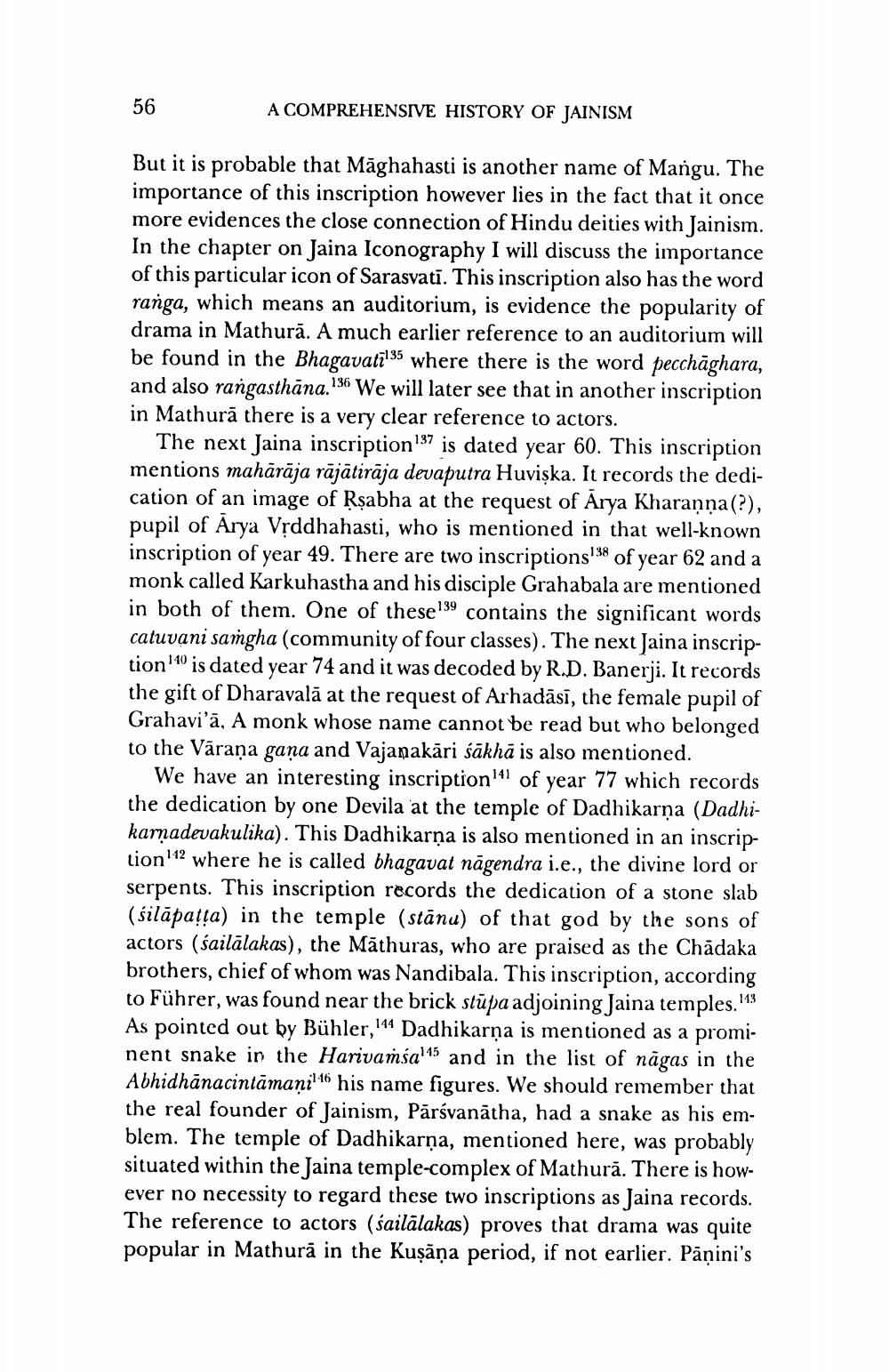________________
A COMPREHENSIVE HISTORY OF JAINISM
But it is probable that Maghahasti is another name of Mangu. The importance of this inscription however lies in the fact that it once more evidences the close connection of Hindu deities with Jainism. In the chapter on Jaina Iconography I will discuss the importance of this particular icon of Sarasvati. This inscription also has the word ranga, which means an auditorium, is evidence the popularity of drama in Mathura. A much earlier reference to an auditorium will be found in the Bhagavati135 where there is the word pecchaghara, and also rangasthana.136 We will later see that in another inscription in Mathura there is a very clear reference to actors.
The next Jaina inscription 137 is dated year 60. This inscription mentions mahārāja rājātirāja devaputra Huviska. It records the dedication of an image of Rsabha at the request of Arya Kharaṇṇa(?), pupil of Arya Vṛddhahasti, who is mentioned in that well-known inscription of year 49. There are two inscriptions138 of year 62 and a monk called Karkuhastha and his disciple Grahabala are mentioned in both of them. One of these 139 contains the significant words catuvani samgha (community of four classes). The next Jaina inscription 110 is dated year 74 and it was decoded by R.D. Banerji. It records the gift of Dharavala at the request of Arhadāsī, the female pupil of Grahavi'ā, A monk whose name cannot be read but who belonged to the Varana gana and Vajanakāri śākhā is also mentioned.
We have an interesting inscription141 of year 77 which records the dedication by one Devila at the temple of Dadhikarņa (Dadhikarmadevakulika). This Dadhikarṇa is also mentioned in an inscription112 where he is called bhagavat nagendra i.e., the divine lord or serpents. This inscription records the dedication of a stone slab (silapaṭṭa) in the temple (stānu) of that god by the sons of actors (sailalakas), the Mathuras, who are praised as the Chadaka brothers, chief of whom was Nandibala. This inscription, according to Führer, was found near the brick stupa adjoining Jaina temples.' As pointed out by Bühler, 144 Dadhikarṇa is mentioned as a prominent snake in the Harivamsal15 and in the list of nagas in the Abhidhānacintamani116 his name figures. We should remember that the real founder of Jainism, Pārśvanatha, had a snake as his emblem. The temple of Dadhikarṇa, mentioned here, was probably situated within the Jaina temple-complex of Mathura. There is however no necessity to regard these two inscriptions as Jaina records. The reference to actors (sailalakas) proves that drama was quite popular in Mathura in the Kuṣāņa period, if not earlier. Panini's
56
143




